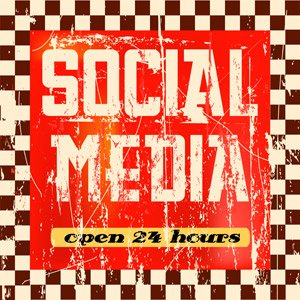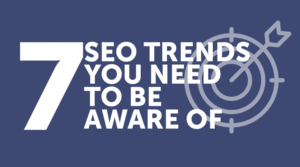Weighing the Benefits and Detriments of Scheduled Social Content

Not all social media updates and interactions are posted live. There are a number of social media management and productivity tools such as HootSuite which will allow you to draft your posts ahead of time and schedule them for automatic updating.
In fact, HootSuite provides the ability to schedule bulk posts in advance using a CSV file and it is fairly easy to program the bulk of your social media content to upload in this manner.
But should you?
It is something that digital marketers are evaluating now that the social media audience is becoming more seasoned and perhaps less tolerant to excessive content.
From the inception of social media as an innovative communication tool the audience and consumers were hungry for content of any form in the introductory and novelty stage. High volume was an effective means to grow online engagement, but as a more experienced and social savvy audience emerges we observe more scrutiny in the content that they are willing to react to. A shift in social media demand from quantitative to qualitative is already apparent, and it is a call to online marketers to evaluate their method and communication mix.
When scheduling content for your Brand your goal is to not only create a volume of communication but also a centrifugal dispersion of your content or intention through social channels. Your audience will only share what they find to be personally useful or interesting and they are seeking a sense of authenticity when they engage with businesses and brands through social media.
Do scheduled posts impact that authenticity? Are they a benefit or a detriment to building qualitative relationships with online audience? Let’s weigh some of the facts.
Benefits of Scheduled Posts
There are a number of advantages to writing and scheduling your social media posts, particularly for a community manager responsible for a number of different brands or accounts.
Simply open up a spreadsheet and type your posts for the next week or two into a CSV (comma separated value) format and provide date and time data, then import it into the social software. Your posts will appear as scheduled on your spreadsheet across your social networks easily and efficiently with a few other qualitative benefits.
Time Management: There are a number of advantages to writing and scheduling your social media posts, particularly for a community manager responsible for a number of different brands or accounts. Some community managers can be responsible for ten or more brands across all social media streams.
A daunting task indeed, but one that is made a little more manageable by pre-scheduling posts. It is a time saving productivity measure that works.
Content Planning: For brands using a content calendar (and you should be using one) to organize content through the year, pre-scheduled posts can allow you to tie in social media updates with blogs, web content, print advertising and other media that are coordinated around specific product launches.
This coordinated push through all channels is highly effective with preplanning of content and made possible by scheduling posts accordingly.
Prime Time Placement: A topic of frequent discussion and debate revolves around the timing of social media posts for optimal exposure.
While we understand the basic concept of prime time (which can vary geographically and culturally) the importance of scheduling Twitter and Facebook posts in that target window is high if you want to reach your audience. If that prime time placement conflicts with a meeting or other interruption for your community manager(s) you can guarantee some posting will still occur in the window by pre-scheduling your posts.
Detriments of Scheduled Posts
Although there are a number of productivity and cost saving benefits to issuing scheduled posts, the potential detriments may cause you to pause and reflect on the efficacy of them.
From a quantitative perspective, scheduled social media content wins hands down.
But what about from the qualitative perspective? Can your audience tell the difference between live and scheduled posts? Does it have an impact on their sharing or interaction with your brand?
Concurrency: If you have ever wondered which organizations are using scheduled posts, you can expect that most of them are (particularly the larger and heavily marketed brands).
Where concurrency becomes awkward for scheduled posts is in the event of a crises or disaster. On the first day of the Japanese disaster many automated Tweets were still going out promoting brands and services in spite of the event.
The perception of tweeting “business as usual” during a major event can cause some significant backlash by online audiences who resent any organization who uses a humanitarian crisis to perpetuate its brand.
The scheduled Tweets didn’t know any better, but a live person at the helm would have posted something more appropriate, eased up on the commercial pitch and engaged more as a member of the global community rather than a business trying to sell something during a crisis.
Most community managers would have logged in immediately to cancel pre-scheduled social content for the day and placed appropriate news items and personal posts expressing concern during a humanitarian misfortune. That is the etiquette expected of that “social” aspect of social media.
Non-Conversational: Can you schedule all your Tweets for a week and never check on your social media accounts?
After all the content is placed and will be posted accordingly, why should you need to check at all? This attitude is really the most damaging side effect of using the convenience of scheduled posts, and to be fair large brands are far more guilty of this than smaller businesses. Large Brands broadcast readily and in volume on social media but fail to engage with responses to questions, concerns or customer service matters that are presented in their social streams.
How does a potential (or existing) customer interpret that equation? They consider it to be a business interested in a one way dialogue with its customers. That can be achieved through print advertising or radio/television broadcasting. But social media is never meant to be a one sided conversation. If you make it one, you risk alienating your audience and your client focused authenticity.
So what do you do?
There are definitely aspects of scheduled posts that are necessary for effective and economical brand communication but you want to do it in a way that engages your audience and helps to build not only awareness but a meaningful relationship between your customers and brand.
Integrate a combination of both live and pre-scheduled social media posts. Monitor your social streams closely and respond promptly to questions, and retweet or share the content provided by your audience as well. If you have committed yourself to a one way conversation then prepare for a lack of results. If your audience wanted to read content they would visit your website. What they want is for you to acknowledge and communicate directly with them, and if you aren’t willing to bring that authenticity to your engagement with them don’t worry. Your competitors will.
Image © Thomas Bethge – Fotolia.com
 SEO is Evolving: Trend You Need to Know About [Infographic]
SEO is Evolving: Trend You Need to Know About [Infographic] Importance Of Professional Social Media Services For Businesses
Importance Of Professional Social Media Services For Businesses Social Media Makes Sales Enablement Easy By Showing How Smart Business Can Be
Social Media Makes Sales Enablement Easy By Showing How Smart Business Can Be 14 Tips To Help You In Marketing Your WordPress Site
14 Tips To Help You In Marketing Your WordPress Site
{ 10 Responses }